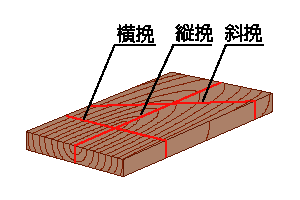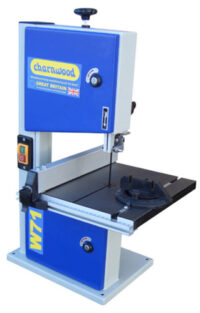
There are many ways to ensure your table saw works properly. Push sticks, alignment of the fence and ensuring the blade is the right depth are just a few examples. Some tips are based in experience and will help improve your cutting results. Read on to discover these and more tips. Practice is also important! You'll soon be a pro at cutting after reading this article! Regardless of what kind of material you're cutting, you'll be amazed at how many of them you've never thought of using!
Push sticks
Push sticks are an excellent way to increase safety when working on a table saw. There are many options. You can buy store-bought ones made from hard plastic, which can fracture and break when the blade hits it. Choose a nylon or ABS plastic-filled one. Avoid aluminum pushsticks as they can kick flak back at your blade. You should instead buy one that is at most 1/4 inch thick.
Blade depth
A table saw blade should be measured in millimeters. This measurement isn't mandatory. The CPSC staff reviewed these data and concluded that this voluntary standard did not affect table saw safety. Below are some important factors to consider when choosing a tablesaw. The blade should never be more than 4mm below skin surface. In addition to the blade depth, the other dimensions of the blade should be considered as well, such as the length and width of the saw.

Fence alignment
Regularly check the fence alignment when operating a tablesaw. It is essential that the fence is within 15% to 20% of the blade's thickness. Therefore, it is crucial to regularly align your tablesaw's fence. Proper alignment of your table saw's fence is crucial for great cuts. A scrap piece of wood, feeler gages or a solid measurement tool can be used to align the fence. You can simply measure the distance from the fence by bringing it within a few feet of the blade. To verify that it is aligned perfectly, simply feel the blade's tooth with a felt gauge and measure the distance.
Bridle joints
The versatility of bridle joints makes it easy to make joinery. They can be used in many types of woodworking projects. The advantages of a bridle joint include strength, ease of machining, and a finished look. It is rarely used in furniture. A mortise-and-tenon joint is another example. To make a Bridle Joint, first you need to create a mortise on one wood piece and a tension on the other. Once you have made the joint with tenoning, it's time to glue the pieces together.
Outfeed jig
Outfeed Jig Tables are great tools to improve your workspace flexibility. A miter slot can be made into the table stand's outfeed to make an outfeed jig table. You can then mount an outfeed jig to adjust the height of your tablesaw.
Blade guard
Here are some Blade Guard table-saw tips that will help keep your fingers protected while cutting wood. First, consider the trajectory of your cut. To avoid kickback, don't place your hand in an unnatural position. This could cause the blade to grab the piece before you are done cutting. Crosscutting is another technique that you can use to avoid the workpiece getting stuck or bind to the blade. Practice this technique regularly to make sure you're always one step ahead.

Dust collection
There are many options available for dust collection with table saws. Whether you are building a cabinet, completing a home renovation, or simply cutting wood, dust collection is essential. A dust collection system should be fitted to your table saw's dust port. These systems capture the majority sawdust from your work area, making it safe and clean for you to inhale. The table saw dust collection system is made of heavy-duty fabric and has a strong zipper, which is not possible with regular vacuum cleaners. The best tablesaw dust collection bags will capture up to 70% from the dust produced by your machine.
FAQ
How much money will I need to get started?
Because every project is unique, there aren't exact numbers. Here are some factors to help you estimate how much money you will need.
-
Material costs
-
Tools and equipment
-
Time spent working on this project
-
Your hourly rate
-
How much profit can you anticipate to make
-
Whether you plan to hire help
It's a good idea for beginners to start with small projects like frames and boxes. As you gain experience, you'll be able to tackle more complex projects.
Do I have to refinish my furniture?
Yes! There are plenty of ways to refinish old pieces of furniture without having to pay a pro. Here are a few ideas:
Use sandpaper on the surface to remove any stains or scratches. Use a clean cloth to wipe the surface.
Clear polyurethane varnish should be applied. Let dry completely before moving furniture around.
Acrylic paint is a great way to paint furniture.
You can stain the furniture instead of using paint. The furniture will get a rich look with the stain.
Shellac wax can be applied. Applying wax will give the wood shine and protection.
Are you a genius in order to master woodworking?
No. Woodworking is not difficult. It is possible to learn basic tools and techniques that will allow you to create beautiful art.
What kind wood should I use for my project?
Oak, maple, cherry and mahogany are the most common wood types used for woodworking. Each type of wood has unique characteristics that affect the look and feel of the final product. For example, oak tends to be darker and harder than other woods. Birch is soft and lightweight, while mahogany is denser and heavier. You can also choose from solid wood or veneers. Veneers consist of thin sheets made from wood and glued together to form a single layer.
Statistics
- The U.S. Bureau of Labor Statistics (BLS) estimates that the number of jobs for woodworkers will decline by 4% between 2019 and 2029. (indeed.com)
- The best-paid 10 percent make $76,000, while the lowest-paid 10 percent make $34,000. (zippia.com)
- In 2014, there were just over 237,000 jobs for all woodworkers, with other wood product manufacturing employing 23 percent; wood kitchen cabinets and countertop manufacturing employing 21 percent. (theartcareerproject.com)
- If your lumber isn't as dry as you would like when you purchase it (over 22% in Glen Huey's opinion…probably over 10-15% in my opinion), then it's a good idea to let it acclimate to your workshop for a couple of weeks. (woodandshop.com)
External Links
How To
How can you accurately measure wood?
We have several ways to measure wood. We use a digital ruler (a tool to measure distances), laser level (used for leveling your work surface), and bubble level (used for levelling your work surface).
A digital caliper can have two jaws, which open and close. One jaw holds the measured object while the other measures the distance between the two points. Digital calipers are great for measuring small distances, such as thicknesses of wood.
Laser levels feature an infrared-light beam that projects lines across the floor. The laser emits red dots on the line. By looking down the line, you can see whether the surface is even or not. For large surfaces, laser levels are the best way to check their accuracy.
Bubble levels look similar to a compass. There is a bubble in the center of the device. The device will inform you if the surface is level if the bubble is in the center. Bubble levels can be used for checking the accuracy in smaller areas.